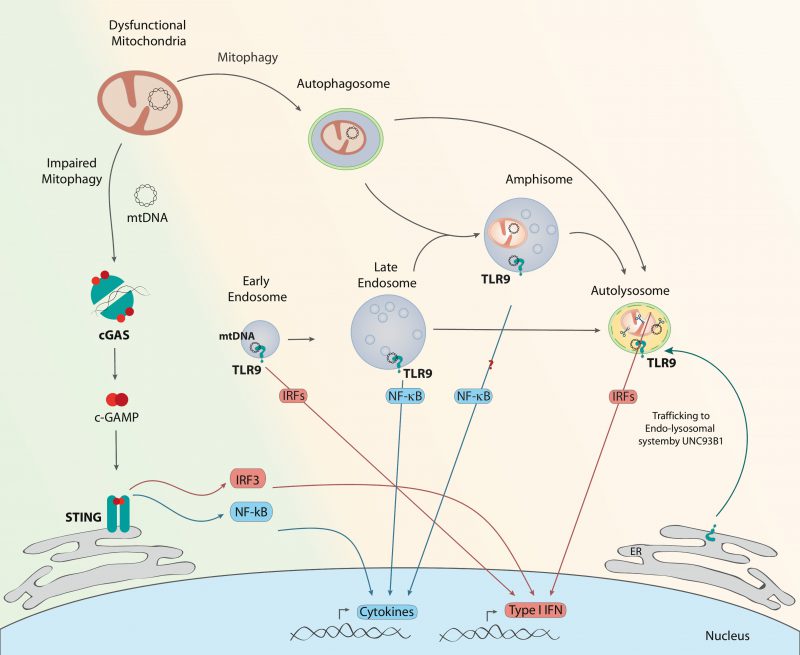Back to article: The sensing of mitochondrial DAMPs by non-immune cells
FIGURE 2: cGAS and TLR9 activation by mtDNA. Under conditions of impaired mitophagy initiation (green background), thus accumulation of dysfunctional mitochondria, there is mtDNA leakage to the cytosol. cGAS homodimers recognize double stranded DNA as mtDNA and produce c-GAMP, which interacts with STING, triggering IRF3 or NF-κB, and in turn the expression of type I IFNs or cytokines, respectively. Under conditions in which mitophagosomal formation occurs normally but resolution is defective (orange background), mtDNA instability can lead to its recognition by TLR9 in different endosomal compartments. TLR9 is recruited from the ER to the endo-lysosomal system, guided by UNC93B1. Engagement of TLR9 in early endosomes or lysosomes results in type I IFN expression through various IRFs. Interaction of mtDNA with TLR9 in late endosomes results in NF-κB activation. Given the resemblance of amphisomes to late endosomes, TLR9 engagement in amphisomes could result in cytokine production.

